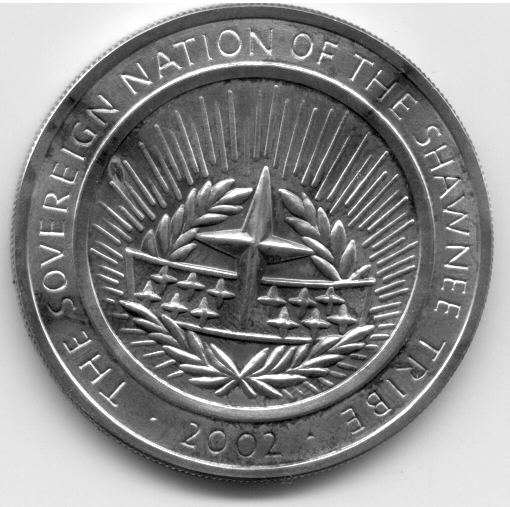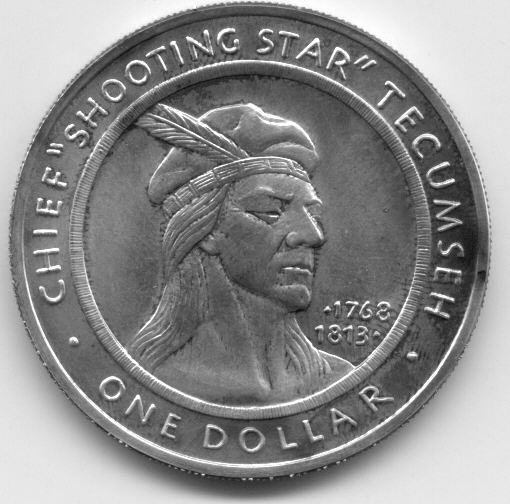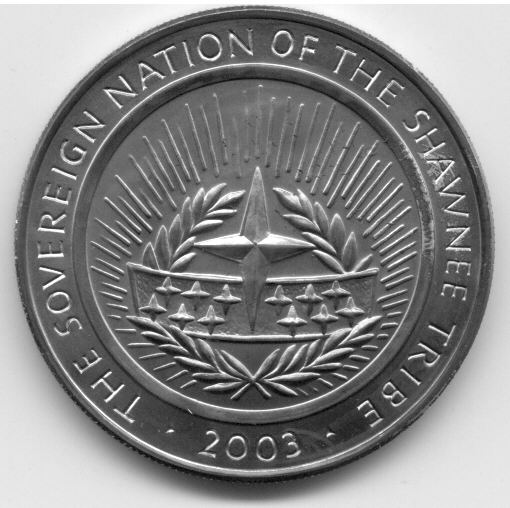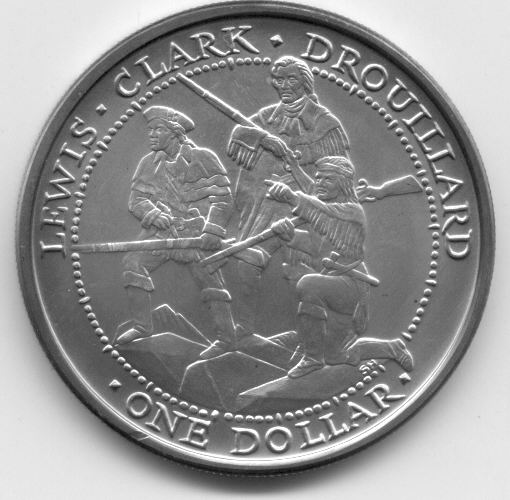 |
 |
| Shawnee Tribe |
|
The Sovereign Nation
of the Shawnee Tribe (Oklahoma), recognized by the United States under the
Shawnee Tribe Status Act of 2000. It has authorized to issue their first
historical coin in the same year on 30th July featuring Chief Tecumseh (50000 pieces in
BU and 20000 pieces in Proof). The coat of arms on the reverse contains 12
stars, representing the original 12 tribes of the Shawnee Indian Nation. The
four tribes that survived were known to the white settlers as Mequachake,
Chillicothe, Liskapoke and the Piqua. "The coins are not legal
tender," Gary Pitcher, the tribe’s director of economic development,
told Indian Country. A value, in this case one dollar, was put on the coins
"because they would be more collectable." Certain media reports
have described the coins as "legal tender on Shawnee lands," which
they are not. Instead, the silver dollar is meant as a commemorative issue,
honoring the Shawnees’ legal separation, in 2000, from the Cherokee Nation
after 135 years of union.
The Shawnee people originally dwelt in what is now Ohio. As their chief, Tecumseh sought to resist European encroachment into the old Northwest Territories by uniting the region’s Indian nations and refusing to sell land held in common by the tribes to individual white settlers. "No tribe has the right to sell, even to each other, much less to strangers," Tecumseh said. "Sell a country! Why not sell the air, the great sea, as well as the earth? Didn’t the Great Spirit make them all for the use of his children? We gave them forest-clad mountains and valleys full of game, and in return what did they give our warriors and our women? Rum, trinkets and a grave." The seal of the Shawnee Tribe is dated Nov. 7, 1811. Tecumseh fought as a brigadier general on the side of the British during the War of 1812 and was killed in combat at the Battle of the Thames in Chatham, Ontario in 1813. In 2003 a second new silver design of Shawnee tribe Dollar featuring Lewis, Clark & Drouillard was introduced (50000 pieces in BU and 20000 pieces in Proof, authenticity signature on the certificate is done by Ron Sparkman, tribal chairman). This coin Commemorates George Drouillard, the son of a French Canadian father and Shawnee Indian mother, who served as interpreter and hunter for the historic Lewis and Clark Expedition. He was an excellent hunter and had a good knowledge of Indian sign language and customs. His skills and advice more than once save the expedition from potential disaster. Pictured on the obverse of the coin are Lewis, Clark and Drouillard holding rifles. The reverse features the tribal arms. In 1804-1806, President Thomas Jefferson commissioned Meriwether Lewis and William Clark to lead an expedition on an epic journey to explore the headwaters of the Missouri River and find an overland route to the Pacific Ocean by the way Columbia River. The "Corps of Discovery" departed Camp DuBois near Wood River, Illinois on May 14, 1804, and proceeded up the Missouri River. The party reached the Knife River Indian Villages, near present day Washburn, North Dakota, where they built Fort Mandan. There they also recruited as interpreters, the Frenchman Toussaint Charbonneau and his wife, Sacagawea. The Corps of Discovery reached the Pacific Ocean in November 1805 and returned home the next year in 1806. These silver and gold coins of Shawnee Tribe can be purchased directly from "Panada America" at http://www.pandaamerica.com/subcategory.asp?subcat=163&categ=77&grp=1. More detail information on Shawnee Tribe can be viewed at http://www.pandaamerica.com/NEWS_shawnee_tacumseh_05_29_2002.ASP |
||
| 1 Dollar 2002 Chief "Shooting Star" Tecumseh 1768-1813 Proof coin |
 |
 |
| 1 Dollar 2003 Lewis - Clark - Drouillard BU coin |
 |
 |
| I purchased my both coins mentioned below from Joel Anderson. Each coins is 38.6mm in diameter, containing 1 troy ounce of .999 fine silver with reeded edge. | ||
| Micro-Nations | ||
| Chiefa Coins | ||